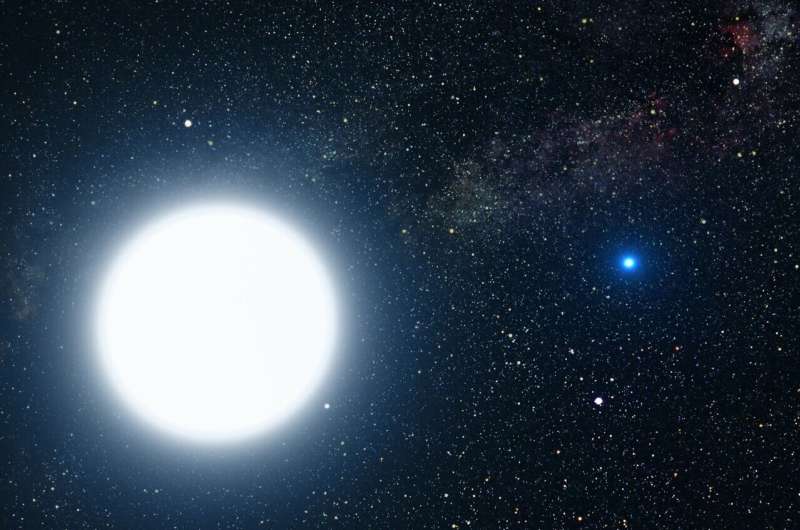This article has been reviewed according to Science X's editorial process and policies. Editors have highlighted the following attributes while ensuring the content's credibility:
fact-checked
peer-reviewed publication
trusted source
proofread
Researchers discover continuously expanding orbit of persistent supersoft X-ray source

Researchers led by Ph.D. candidate Zang Lei and Prof. Qian Shengbang from Yunnan Observatories of the Chinese Academy of Sciences (CAS) have discovered that the orbital period of the persistent supersoft X-ray source QR Andromeda (QR And) is continuously increasing. The orbital evolution of QR And is mainly caused by the mass transfer from the low-mass companion to the white dwarf on its Kelvin–Helmholtz timescale.
This work was published in Monthly Notices of the Royal Astronomical Society.
QR And is the optically brightest galactic supersoft X-ray source, where mass is transferred from a donor secondary to a massive white dwarf primary via an accretion disk.
To further study their mass exchange and orbital evolution, the researchers analyzed the orbital period variation of QR And in detail, by using the continuous Transiting Exoplanet Survey Satellite (TESS) light curves and the photometric observations collected by American Association of Variable Star Observers (AAVSO) database. They found that the orbital period is continuously increasing.
Moreover, based on the results of previous research, the researchers estimated that the mass of the donor secondary is about 0.5 solar mass by detailed analysis, while the white dwarf mass is about 1.2 solar masses.
"Therefore, the continuous increase in the orbital period is mainly caused by the mass transfer from the low-mass companion to the white dwarf on its Kelvin–Helmholtz time-scale, while wind mass loss from the accretion disk may also contribute to the period variation," said Zang.
The mass and angular momentum carried off by wind from the accretion disk delay expansion of the orbit for QR And. Thus, the companion star with a low mass can always be filling its critical Roche lobe and transferring material to the white dwarf.
The researchers also estimated the range of mass transfer rate for QR And in this scenario, and roughly estimated that QR And may reach to the Chandrasekhar limit in at least 1.5 million years, then might explode as a type Ia supernova.
More information: Lei Zang et al, Light and period variations in the supersoft X-ray source QR And (= RX J0019.8 + 2156), Monthly Notices of the Royal Astronomical Society (2023). DOI: 10.1093/mnras/stad1161
Journal information: Monthly Notices of the Royal Astronomical Society
Provided by Chinese Academy of Sciences





















